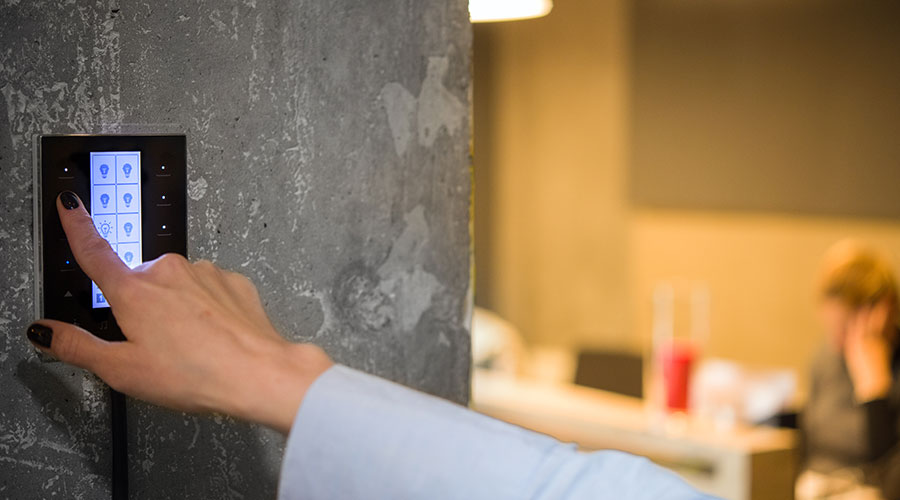Installing Basic Lighting Controls Can Provide Energy Savings
Beyond changing out lamps, installing basic lighting controls throughout a facility is one of the easiest and fastest ways to jumpstart energy savings, lighting experts say. From installing occupancy sensors to using to facility's energy management system to schedule light levels to change or even go off in various areas within the facility, lighting controls can reshape a facility's energy use.
At the most basic level, energy savings can be derived from a simple scheduled control strategy. Scheduling provides for automatic on/off or dims lights at specified times of the day. Scheduling can be customized to include all lights in a building or within specific zone, such as a hallway, a conference area, or an office space.
According to estimates from the California Energy Commission, scheduling alone can generate between 5 percent and 15 percent energy savings in a commercial facility.
Designed to increase energy savings beyond what scheduled controls can achieve, occupancy/vacancy sensors are more tuned to activity levels and actual space use.
Sensors detect when the room is occupied or vacant or turn lights on or off accordingly. They begin saving energy immediately by ensuring lighting remains off when areas are vacant, as opposed to running on a timed schedule.
"The more granular the control, the greater the opportunity for savings," notes Rita Renner, director of marketing and communications at WattStopper. "In fact, several years ago, the Lighting Research Center conducted some research that concluded adjusting time delays could impact savings. Reducing time delays from 20 to 30 minutes down to 15 or 10 minutes could result in significantly higher energy savings."
According to Cheryl De Los Santos, manager of marketing communication at Leviton, facility managers can expect a minimum savings of 23 percent with up to 80 to 90 percent savings in some cases, depending on how the space is typically used and how often lights were being left on unnecessarily.
In new facilities, occupancy/vacancy sensors now are required by building energy codes in nearly every space, notes Brian Dauskurdas, director of global energy solutions at Lutron, who adds that there are simple retrofit solutions for existing buildings.
"There are wireless options available that can be installed in a space in less than 15 minutes, and with zero labor costs," he says.
A third basic option comes in the form of bi-level switching, which uses photocells, occupancy sensors and bi-level lights to reduce the number of lamps illuminated in a bank of lights when ambient light is present or the space is unoccupied. It can save up to 50 percent of energy costs.
"With a bi-level switch, the occupancy sensor will switch lights on to 50 to 75 percent of full capacity, while 100 percent capacity will require a manual switch from the occupant," De Los Santos explains. "As such, the frequency of full brightness is lowered, saving energy."
The road to energy savings isn't a difficult one when it comes to basic lighting upgrades and controls. The technology is there, as a low-hanging fruit that facility managers easily can reach.
"Corporate leadership in facilities management has to be willing to bring the technology up to current times," says NEMA enLIGHTen America chairperson Ward. "With all the new developments out there, it's a most exciting time in lighting history. Mr. Edison might not agree, but I'll bet he sure would be excited now. He might even ask, 'What took you so long?'"
About enLIGHTen America
Chartered by the NEMA Lighting Division, the enLIGHTen America campaign operates on the strategic mission to build awareness of quality lighting products and systems designed for retrofit and renovation applications.
More than 75 percent of America's 5 million buildings were built prior to the introduction of today's energy-efficient lighting technologies. The enLIGHTen America message focuses on energy savings, sustainability, cost reduction, fast payback and the quality of modern lighting.
For more information, visit www.nemasavesenergy.org
|
Related Topics:














